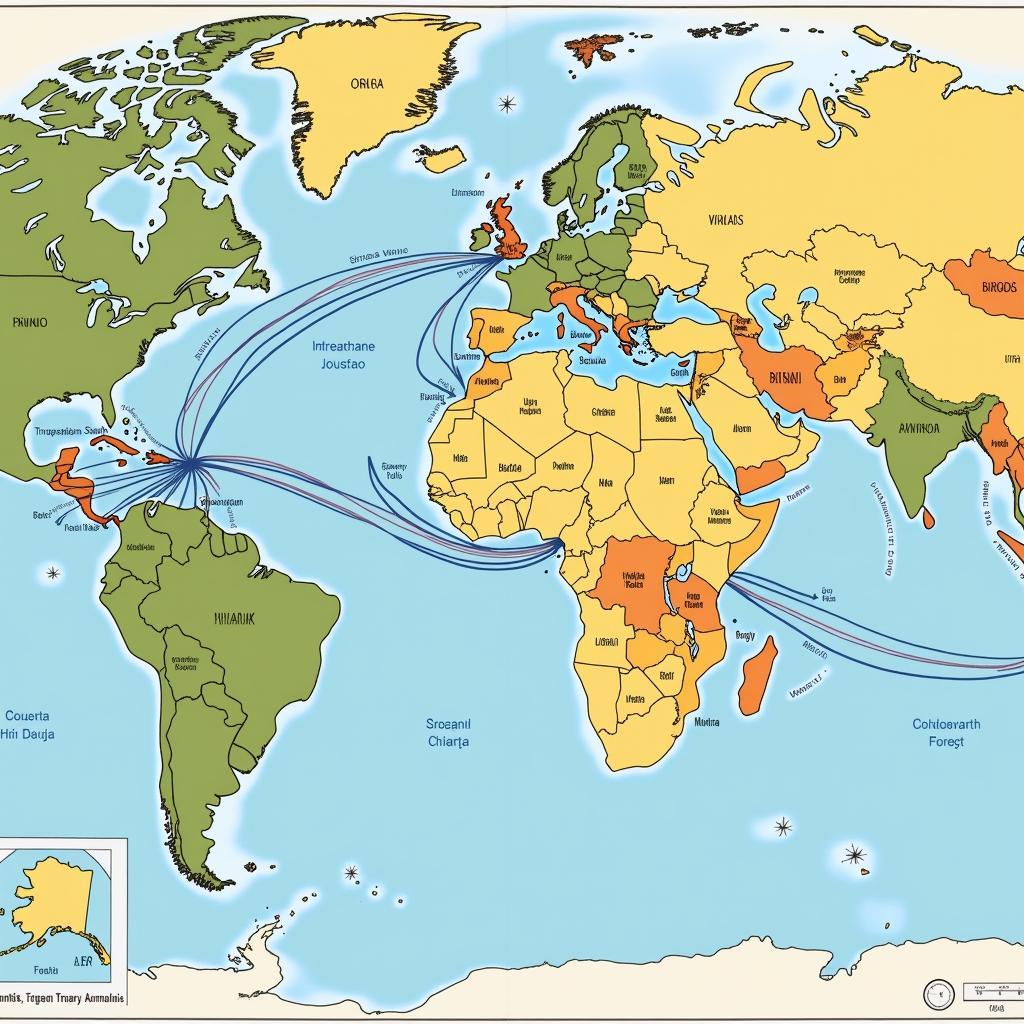African Landscape Silhouette: A Captivating Journey
The African landscape, with its vast plains, towering mountains, and diverse wildlife, is a photographer’s dream. And when captured in silhouette, it takes on an almost mythical quality. The simple contrast of light and dark creates powerful and evocative images that highlight the beauty and grandeur of the continent.
The Magic of an African Landscape Silhouette
Silhouettes transform ordinary scenes into works of art. They strip away the details, leaving behind the essential forms and shapes. This simplicity allows the viewer to focus on the composition and the emotions it evokes. In an African Landscape Silhouette, a lone acacia tree against a fiery sunset or a herd of elephants marching across the savanna become symbols of the continent’s untamed spirit.
Capturing the Perfect Silhouette
The key to capturing a stunning African landscape silhouette is to find a strong light source behind your subject. This could be the setting sun, a bright moon, or even a campfire. Once you’ve found your light source, position yourself so that your subject is backlit.
Experiment with different angles and compositions to find the most visually appealing shot. And don’t be afraid to use negative space to your advantage. The empty sky or ground can add a sense of depth and drama to your image.
Essential Equipment and Settings
While you can capture a silhouette with almost any camera, a DSLR or mirrorless camera will give you more control over your settings. A wide-angle lens is ideal for capturing the expansive African landscape, while a telephoto lens can be used to isolate specific subjects.
Set your camera to manual mode and adjust the exposure to ensure that the background is bright and the subject is underexposed. You may need to use a tripod to keep your camera steady, especially if you’re shooting in low light conditions.
Iconic African Landscape Silhouettes
There are countless iconic African landscapes that lend themselves to silhouette photography. The Serengeti National Park in Tanzania, with its vast plains and abundance of wildlife, is a prime location for capturing stunning silhouettes of animals against the setting sun. The Maasai Mara National Reserve in Kenya offers similar opportunities, as does the Kruger National Park in South Africa.
Beyond Wildlife: Culture and Architecture
But African landscape silhouettes aren’t limited to wildlife. The continent is also home to a rich tapestry of cultures and architectural styles. The ancient ruins of Great Zimbabwe, the towering pyramids of Egypt, and the colorful markets of Morocco all offer unique opportunities for capturing stunning silhouettes.
“The beauty of a silhouette lies in its simplicity. It forces us to focus on the essentials, to see the world in a new light,” says renowned African photographer, Adebayo Ogunlesi.
The Emotional Impact of Silhouettes
Silhouettes have a powerful emotional impact. They can evoke feelings of mystery, solitude, peace, and awe. By simplifying the scene, they allow the viewer to connect with the image on a deeper level.
Conclusion
African landscape silhouettes offer a unique and captivating perspective on the continent’s beauty and grandeur. Whether you’re a seasoned photographer or just starting out, there’s no shortage of inspiration to be found in these stunning images. So grab your camera and start exploring the magic of the African landscape in silhouette.
FAQ
1. What is the best time of day to photograph silhouettes?
The best time is during the golden hour, shortly after sunrise or before sunset, when the sun is low in the sky and casts long shadows.
2. What camera settings should I use for silhouette photography?
Use manual mode, adjust the exposure to underexpose the subject, and use a low ISO setting to minimize noise.
3. Do I need a special lens for silhouette photography?
While any lens can be used, wide-angle lenses are great for capturing expansive landscapes and telephoto lenses for isolating subjects.
4. What are some tips for composing a silhouette photograph?
Look for simple and strong shapes, use negative space effectively, and pay attention to the position of the light source.
5. What are some other subjects I can photograph as silhouettes in Africa?
Besides landscapes and wildlife, you can capture silhouettes of people, trees, buildings, and cultural elements.
Need Help Planning Your African Adventure?
Contact us for personalized travel advice, safari bookings, and more. We’re here to help you experience the magic of Africa!
Phone: +255768904061
Email: kaka.mag@gmail.com
Address: Mbarali DC Mawindi, Kangaga, Tanzania
Our team is available 24/7 to assist you.
